
When we talk about mutual funds, the most common term associated with this investment is (SIP) Systematic Investment Plan). SIPs showcase the power of compounding and help investors build a substantial corpus in the long term. However, there is another powerful concept in the mutual fund world that deserves your attention - SWP (Systematic Withdrawal Plan). An SWP can provide you with a steady, almost perpetual income stream, making it an ideal tool for a comfortable retirement. Dive into this blog to learn all about SWP (Systematic Withdrawal Plan) and how to harness the power of mutual funds investments to get maximum benefits.

A Systematic Withdrawal Plan (SWP) is a financial strategy that allows investors to withdraw a fixed amount of money from their mutual fund investments at regular intervals, such as monthly, quarterly, or annually. Unlike lump-sum withdrawals, a SWP provides a steady income stream, making it an excellent option for those looking to generate regular income from their investments, particularly during retirement. When an investor sets up an SWP, they have to specify the amount and frequency of withdrawals, and the mutual fund company automatically redeems the corresponding number of units from their investment to provide the required cash flow. This method not only helps in managing expenses systematically but also ensures that the remaining invested amount continues to grow and benefits from potential market gains. SWPs, thus, offer the dual advantage of maintaining financial stability and enjoying the tax benefits associated with long-term investments in mutual funds.
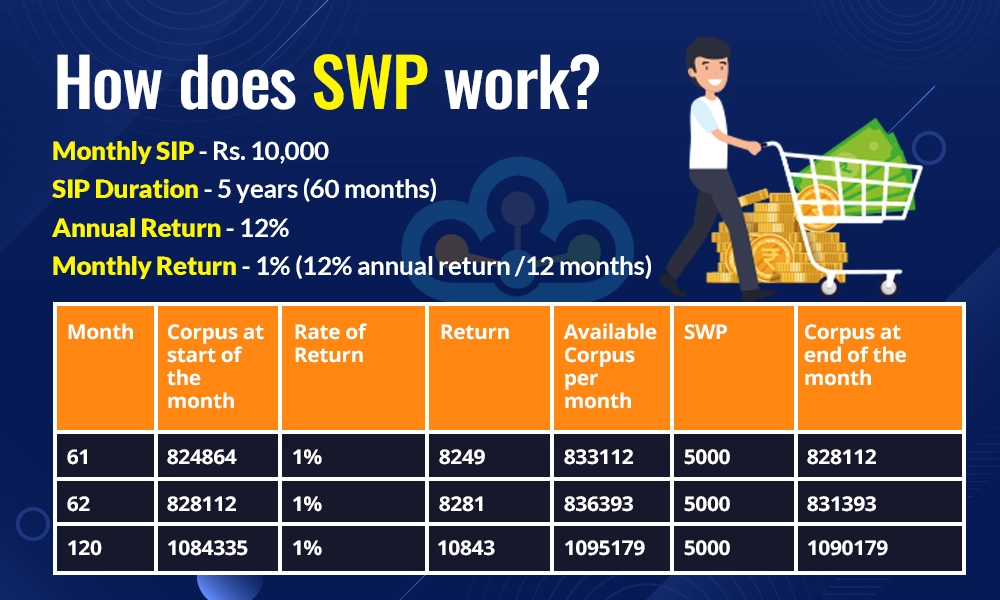
A Systematic Withdrawal Plan (SWP) is a method by which investors can withdraw a fixed or variable amount of money from their mutual fund investments at regular intervals. Unlike a Systematic Investment Plan (SIP), where an investor puts in a fixed amount of money periodically to build a corpus, SWP allows for the opposite, i.e., systematic withdrawal of funds from the corpus. This can be particularly beneficial for retirees or those needing regular income. SWP ensures a steady cash flow by redeeming units from the mutual fund investment. The withdrawn amount can be customised based on the investor’s financial needs and it can be set to occur monthly, quarterly, semi-annually, or annually. The main advantage of SWP is that it allows investors to enjoy the benefits of their accumulated investments while potentially still earning returns on the remaining corpus.
Let us consider the following example to understand how the SWP works.
Consider Mr. A who invests Rs. 10,000 per month through SIP in an equity mutual fund for 5 years (60 months). After 5 years, the investor starts a SWP of Rs. 5,000 per month.
Assumptions
Monthly SIP - Rs. 10,000
SIP Duration - 5 years (60 months)
Annual Return - 12%
Monthly Return - 1% (12% annual return /12 months)
The monthly returns from SIP and the corpus at the end of each month will be,
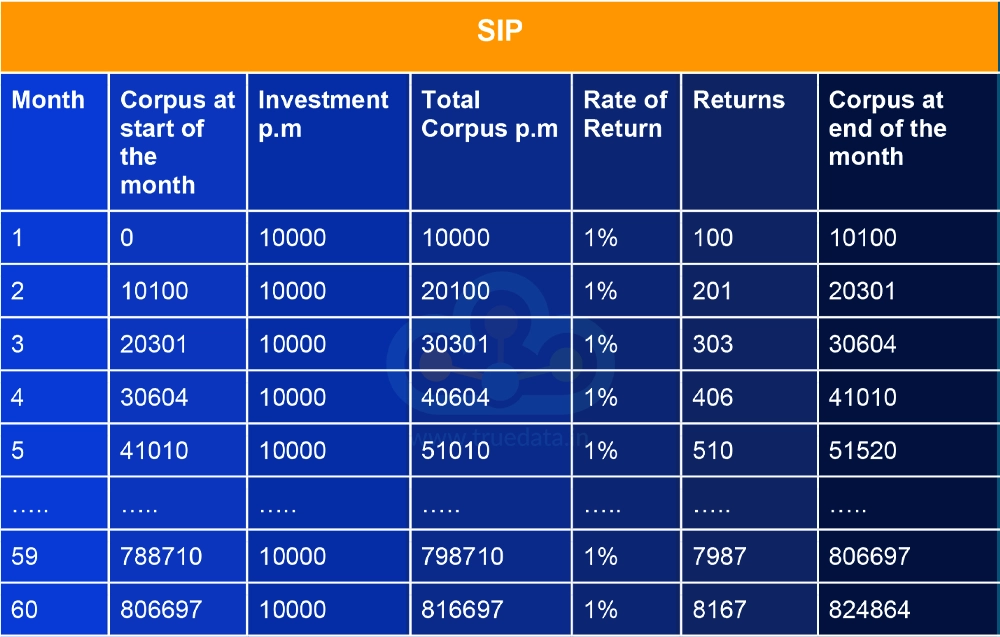
The calculation of monthly returns from SIP and balance corpus at the end of each month after starting SWP from the 61st month will be,
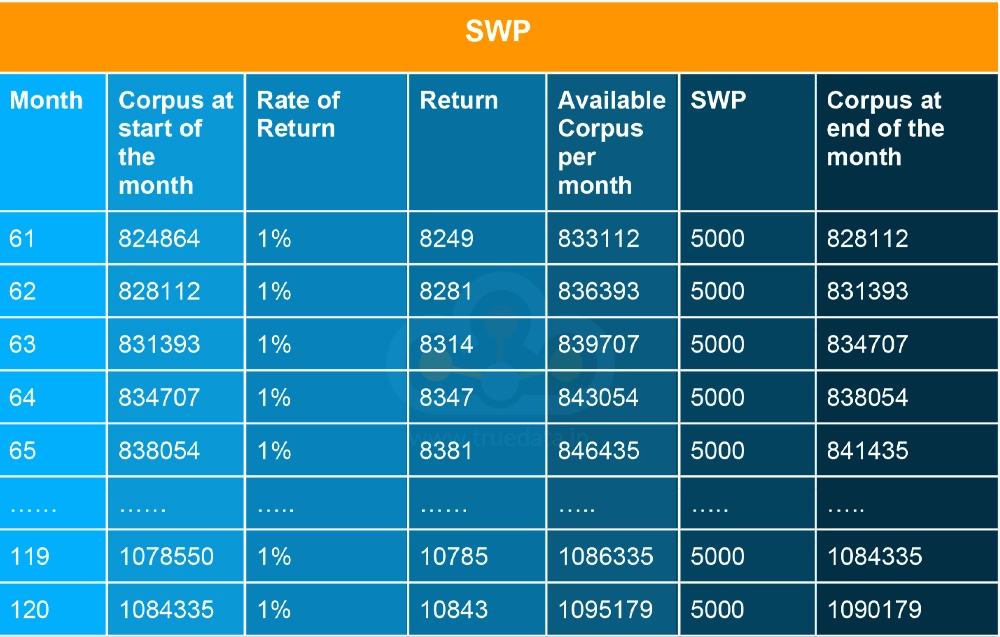
Explanation
Accumulation Phase (SIP) - Over 60 months, Investor A contributes Rs. 10,000 each month. Assuming a 12% annual return, the total corpus grows due to the power of compounding.
Withdrawal Phase (SWP) - Post 5 years, Iinvestor A starts withdrawing Rs. 5,000 monthly. The remaining corpus continues to grow at the assumed rate of 12% annually.
This table illustrates the transition from SIP to SWP and the gradual withdrawal of funds while maintaining a growing corpus, depending on the returns and withdrawals.
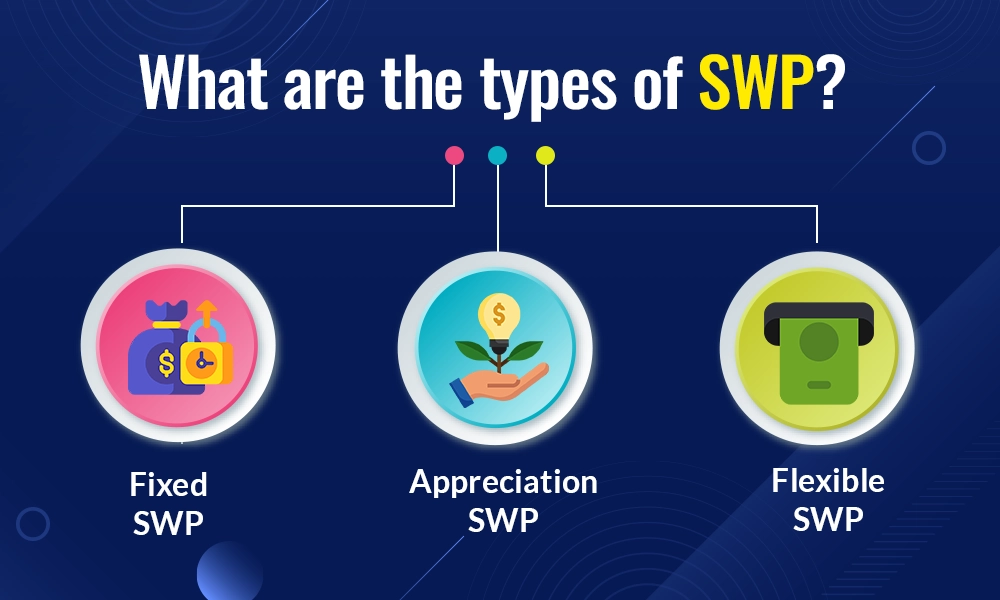
The common types of SWPs available for investors are,
A Fixed SWP allows an investor to withdraw a predetermined, fixed amount of money at regular intervals, such as monthly or quarterly. For example, if an investor decides to withdraw Rs. 10,000 every month, the mutual fund company will redeem the necessary units to provide this fixed amount. This type of SWP is ideal for those who need a consistent and predictable income stream, such as retirees who rely on this money for their day-to-day expenses.
In an Appreciation SWP, the investor withdraws only the gains or appreciation earned on their mutual fund investment, leaving the principal amount intact. This type of SWP is beneficial for those who want to preserve their initial investment while enjoying the returns it generates. For example, if an investor’s mutual fund portfolio grows by Rs. 5,000 in a month, that amount will be withdrawn, keeping the principal investment untouched.
A Flexible SWP offers investors the option to change the withdrawal amount and frequency according to their financial needs and market conditions. This type of SWP provides greater control and adaptability, allowing investors to increase or decrease their withdrawals or even pause them temporarily. For instance, if an investor needs more funds for a medical emergency, they can increase the withdrawal amount for that period.
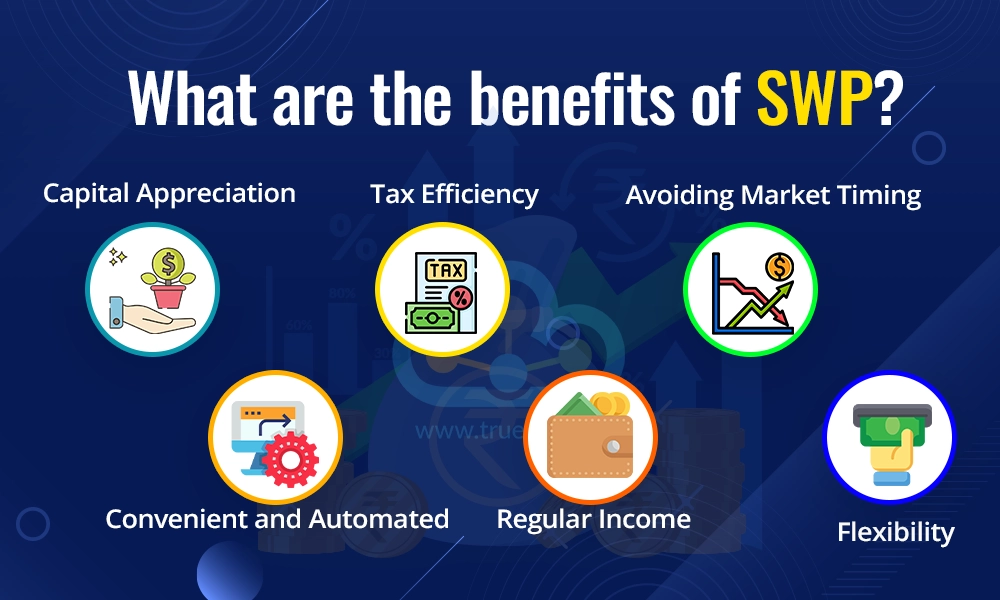
SWP is an excellent tool for investors to get a growing corpus with market benefits and a passive income together. Some of the key benefits of SWP that make it attractive for various classes of investors include,
SWP provides investors with a steady and predictable source of income. This can be particularly beneficial for retirees who need regular cash flow to cover their monthly expenses. Withdrawing a fixed amount periodically allows investors to better manage their finances and maintain their lifestyle without worrying about market volatility.
SWP can be a tax-efficient way to withdraw funds compared to other forms of income. Long-term capital gains from equity mutual funds are taxed at a lower rate, and the principal amount withdrawn is not taxed. This can result in lower overall tax liability for investors compared to traditional fixed deposits or other income sources.
SWP offers great flexibility in terms of withdrawal amounts and intervals. Investors can choose how much they want to withdraw and how often, whether it be monthly, quarterly, semi-annually, or annually. This customisation allows investors to align their withdrawals with their personal financial needs and goals.
Even as investors withdraw funds, the remaining corpus in the mutual fund continues to earn returns. This allows for potential capital appreciation, helping to sustain and grow the investment over time. Investors can, therefore, maximise the longevity and value of their investments by balancing withdrawals with ongoing returns.
The process of setting up a SWP is straightforward and can be automated. Once the plan is set up, withdrawals happen automatically, ensuring that investors receive their funds without needing to take any additional actions. This convenience makes SWP an attractive option for those who prefer a hands-off approach to managing their investments.
SWP helps investors avoid the pitfalls of market timing. Instead of withdrawing large sums based on market fluctuations, investors systematically withdraw smaller amounts at regular intervals. This reduces the risk of withdrawing too much during a market downturn and helps to smooth out the impact of market volatility.

SWP (Systematic Withdrawal Plan) is a favourable option for investors, especially those seeking a stable source of passive income. Here are a few categories of investors who can benefit from SWPs.
Retirees - Retirees looking for a regular source of income to meet their monthly expenses should consider SWP. It provides them with a predictable cash flow without needing to rely solely on their savings.
Individuals Needing Regular Cash Flow - Those who need consistent cash flow for living expenses, education fees, or any other regular financial commitments can benefit from SWP. It ensures a steady inflow of funds while keeping the investment intact.
People with Long-Term Investments - Individuals who have accumulated a significant corpus through long-term investments and now wish to start withdrawing periodically should consider SWP. It allows them to utilise their investments while still earning returns on the remaining corpus.
Parents Planning for Education Expenses - Parents who have invested in their children's education can benefit from SWP. As educational expenses arise periodically, SWP ensures that funds are available when needed, without having to liquidate large sums all at once.
Small Business Owners - Small business owners who require a regular income stream to support their personal finances while their business revenue fluctuates can consider SWP. It provides a steady source of income to manage personal expenses.
People in Transition Periods - Individuals who are between jobs or experiencing career transitions can use SWP to ensure a steady flow of funds during periods of uncertainty. It helps maintain financial stability without depleting their savings rapidly.
Investors Seeking Diversification in Income Stream - Investors who want to diversify their income sources beyond salary or rental income can use SWP. It provides an additional stream of regular income from their mutual fund investments.
Systematic Withdrawal Plans are relatively less popular as compared to SIPs. However, a combination of the two is an excellent tool for wealth creation as well as a steady source of income for investors to truly harness the diverse benefits of mutual funds. Investors should also be wary of factors like inflation, capital erosion and market risks which are inherent parts of mutual fund investments while considering SWPs and the amount to be withdrawn under SWPs.
We hope this detailed explanation of SWP can help you build a healthy investment portfolio that can meet your investment goals. Do you have a SWP or plan to get one soon? Let us know your thoughts on SWPs or if you need more information on this topic and we will address it.
Till then Happy Reading!
Read More: Stocks or Mutual Funds - Which is Better?

The use of technical analysis for trading is vital for creating a successful tr...
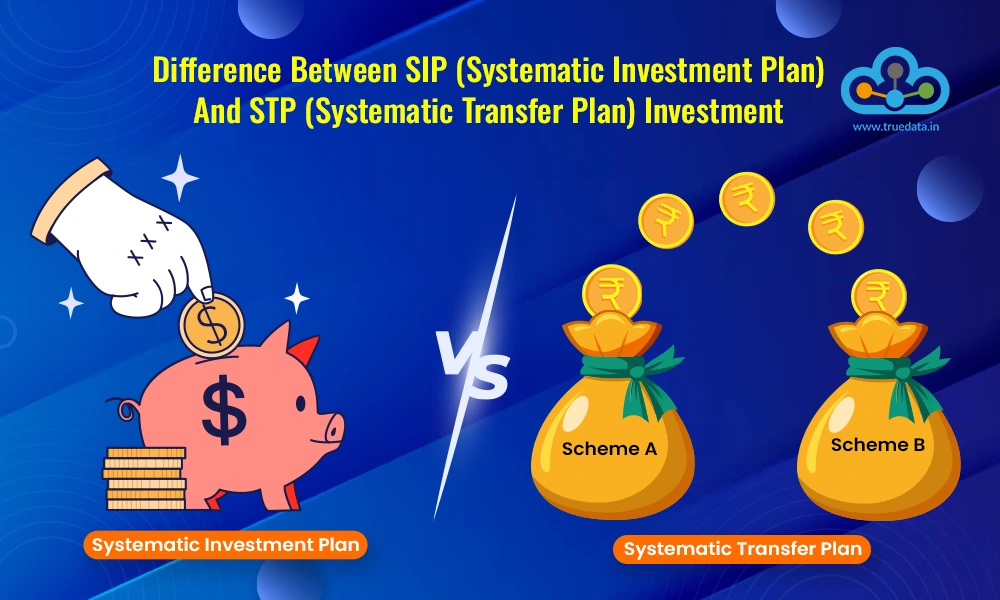
Mr. Warren Buffet has a very famous quote: 'If you don't find a way to make mone...

Imagine you are a fresher and at the start of your career, what will be the most...